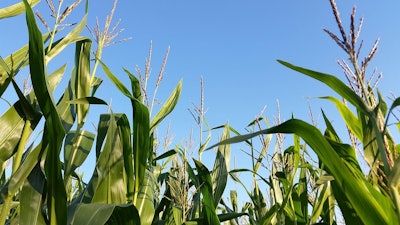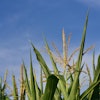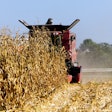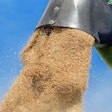
The U.S. Department of Agriculture released its July World Agricultural Supply and Demand Estimates report Thursday, projecting smaller corn supplies and ending stocks alongside higher demand for soybean oil in biofuel production.
The monthly report, which provides a comprehensive forecast of supply and demand for major U.S. and global crops, indicated wheat production is projected at 1,929 million bushels, up 8 million from last month due to higher yields offsetting reduced harvested area.
Corn stocks tighten on reduced acreage
For corn, the 2025/26 outlook shows smaller supplies, domestic use, and ending stocks. Corn beginning stocks were cut 25 million bushels to 1.3 billion, reflecting an increase in exports for the current marketing year. Production for 2025/26 is forecast down 115 million bushels on lower planted and harvested area as reported in the June 30 Acreage report, while the yield remains unchanged at 181.0 bushels per acre.
"With supply falling more than use, ending stocks are down 90 million bushels," the report stated. The season-average farm price remains unchanged at $4.20 per bushel.
Delta flooding impacts rice production
Heavy rainfall and flooding in April and May significantly disrupted rice planting in the Delta region, particularly in northeastern Arkansas. U.S. rice production is projected at 205.0 million cwt on lower harvested area, down 7.9 million cwt from last month's estimate. The all rice, long-grain, and other state medium- and short-grain season-average farm prices are all raised $0.50 per cwt to $14.00, $13.00 and $13.50 respectively.
EPA rule boosts soybean oil demand for biofuels
The report highlighted a notable shift in soybean oil demand, influenced by the Environmental Protection Agency's proposed rule for Renewable Fuel Standard volumes for 2026 and 2027. Soybean oil used for biofuel for 2025/26 is raised 1.6 billion pounds to 15.5 billion, reflecting a 23 percent increase from the prior 3-year average.
"EPA not only significantly raised the mandates but also proposed to reduce the number of Renewable Identification Numbers generated for imported renewable fuels and renewable fuels produced from foreign feedstocks starting in 2026, which increases demand for domestically produced feedstocks like soybean oil," according to the report.
U.S. soybean crush for 2025/26 is raised 50 million bushels to 2.54 billion, supported by higher demand for soybean oil for biofuel. However, soybean exports for 2025/26 are lowered 70 million bushels to 1.75 billion due to higher U.S. domestic demand, higher exports for Argentina and Ukraine, and larger Brazilian supplies.
Cotton production expands with increased acreage
The U.S. cotton balance sheet shows higher production and ending stocks, with planted area raised to 10.12 million acres based on the NASS June Acreage report. Production forecast is increased 600,000 bales from June's projection to 14.60 million, up from 14.41 million last year. The projected season-average upland price for 2025/26 remains unchanged at 62 cents per pound.
Mixed outlook for meat production
Total U.S. red meat and poultry production for 2025 is forecast lower than last month, with lower beef and turkey production more than offsetting higher pork and broiler production. Beef production is lowered on a slower pace of slaughter and reduced dressed weights, while pork production is raised as higher expected dressed weights and slaughter in the second half of the year offset lower second-quarter production.
For 2026, beef production forecast is raised, with higher expected feedlot placements during the second half of 2025 as strong demand for beef supports feeder cattle prices. The forecast assumes cattle imports from Mexico remain banned for the duration of the forecast period due to the presence of New World Screwworm.
Meat trade dynamics shift
Beef import forecasts for 2025 and 2026 are raised on recent trade data, with the increased pace of imports expected to continue through the end of 2026. Beef exports are raised for both years on recent trade data and higher production.
Dairy production increases on larger herds
The milk production forecasts for 2025 and 2026 are raised from last month on higher cow inventories and an increased rate of growth in milk per cow. For 2025, the price forecast for cheese is lowered on recent prices, while butter, nonfat dry milk, and whey prices are increased on robust demand. The all milk price is forecast higher at $22.00 per cwt.

















